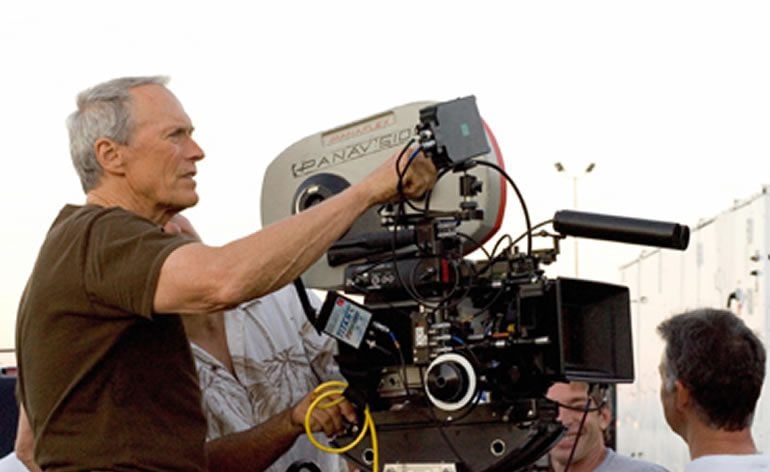The Nighttime Blues
by Carl Filoreto
Urgency, necessity, and occasionally, downright fear can spawn creative inspiration. Quite a few years ago, I found myself in a swampy area of eastern Texas near the Louisiana border. I was working for a national news magazine show, and my mission was to create an eerie, nighttime look for some shots that would be used as part of a flashback sequence. The story concerned a particularly hideous murder that had been committed in the area.
Standing on a rural road around midnight under a canopy of pines and swamp oaks, and looking at the still pockets of water making up the swamps and bogs of the area produced feelings of anxiety. I was armed with a collection of HMI’s, tungsten lights, two cars (one was driven by the sound person), and a couple of inverters.
It was late, the setting induced a visceral creepiness, and we were anxious to perform the job and get back to the safe confines of our somewhat pathetic rural motel. For the initial shot, I picked an area of open water surrounded by the impressive forest canopy and set about the business of setting up a few HMI’s to light the scene. ‘Easy pickings,’ I thought at the time. ‘How can I miss?’
When I turned on the camera and looked in the monitor, I was extremely disappointed with my efforts. All the potential shots looked dark and unimpressive. No drama. No mystery. No good.
In a lot of film work, blue light is used to convey the feeling of a night scene. It provides the light quality that psychologically triggers a sense of night. Inspired by this thought, I started to add some blue gels to the HMI’s, and the results were equally disappointing. Other than significantly cutting down the amount of light emitted by the HMI’s, I hadn’t captured the look I needed, and I was becoming increasingly frustrated by my general ineptitude.
We were about sixteen hours into our day, and the comforting image of my head hitting the pillow seemed distant. My colleague and soundman were starting to cast plaintive glances at me, with a look of ‘Hey, let’s get things going so we can get out of here already.’ Then it hit me. Pondering the blue light situation, I realized I’d been approaching the situation from the wrong angle. Small, portable HMI’s were still somewhat of a novelty at the time, and I hadn’t adjusted my thought processes accordingly. HMI’s are daylight balanced, usually at a color temperature of around 5600-6200 degrees Kelvin. This means they emit blue light. Out of habit, I’d been shooting the scene with a daylight white balance. The daylight setting told the camera to add lots of red to the scene to counterbalance the blue light waves that are predominant in daylight. I was defeating my entire purpose.
I switched the camera to a tungsten setting, and like magic, there it was – lovely, ominous blue tones bouncing off the water and the overhanging tree branches. It still didn’t quite pop, though. Building on the color temperature theme, I added some tungsten light on the guard rail and the nearest trees. It worked beautifully. The tungsten light provided a touch of warmth and accentuated the green tones in the trees. The contrast established a wonderfully ominous night look.
I’ve occasionally used this principle to establish a cool, contrasty look in night interviews and live shots. A great example occurred when I was based in Doha, Qatar, for NBC News at the beginning of the war in Iraq. Our mission was to provide live coverage from Camp As Saliyah, which was the headquarters for US Central Command. The evening and early night shots for NBC Nightly News and the MSNBC program line-up were staged from an outdoor platform looking back at the camp and some well-placed military vehicles. We had five crews rotating through the shots to provide round the clock coverage. Our first efforts were workmanlike, but lacked any visual wow factor.
We were lighting with a number of HMI’s and PAR lights, and we had a large 1200 watt PAR light aimed into the background. One of the creative thinkers on the scene came up with the idea of lighting the correspondents in tungsten, shooting the scene with a tungsten white balance, and leaving the big daylight balanced par aimed at the background vehicles. And there it was again, a background bathed in a dramatic blue light.
Let me add a final note concerning inverters. Simply, they’re an invaluable tool. A vehicle power inverter attaches to your car battery and converts the DC based electricity generated by your car’s power system into more functional AC power. I now carry a 750 watt inverter in my car, and I can usually get a 400 watt HMI and a 200 watt HMI powered from it. I used to carry a bulkier 1600 watt inverter, but I found that most car alternators wouldn’t handle the load, so the extra capacity was a waste. I keep my inverter protected in a compact case and take it with me everywhere.
Carl Filoreto is an award-winning DP, and his company is Elk Run Productions, Inc. (www.elkruntv.com) and https://colorado4k.com/about-carl/ which has a roster of clients that spans corporations, production houses, crewing agencies, and broadcast and cable networks, including Dateline NBC, The Food Network, and The Travel Channel. Prior to starting his business, Carl won seven regional Emmy awards, numerous national and regional National Press Photographers awards, and multiple awards from Colorado Ski Country and the National Snowsports Journalists Association, while working at KMGH-TV in Denver, WTNH in New Haven, and WGGB in Springfield, Massachusetts.
Featured in StudentFilmmakers Magazine, January 2008 Edition.





